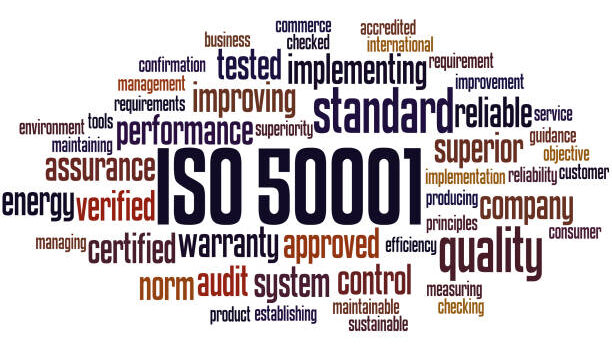 Uncategorized
Uncategorized
ISO 50001 Certification: A Step-by-Step Guide to Boosting Sustainability
When it comes to making sustainability a core part of your business operations, there’s one certification that stands out above the rest: ISO 50001. It’s not just about checking a box or keeping up with industry trends—it’s about embedding energy management deeply into the fabric of your organization. Whether you’re a sustainability-focused organization or looking to deepen your commitment to energy efficiency, ISO 50001 is the roadmap you need.
But what exactly is ISO 50001? And why should it matter to your organization? Let’s break it down.
What is ISO 50001? Let’s Start at the Beginning
ISO 50001 is an international standard that provides organizations with a structured framework to manage and reduce energy consumption. This is done through systematic monitoring, measurement, and continuous improvement of energy use. But it’s not just about reducing costs—it’s about driving a more sustainable future for everyone.
Think of it like this: every business, no matter the size, consumes energy in some form. Whether it’s running machinery, heating office spaces, or powering electronics, energy usage is part of daily operations. ISO 50001 provides you with the tools to actively track, manage, and minimize your environmental footprint, while simultaneously improving operational efficiency.
ISO 50001 certification is the proof that your company is not just thinking about sustainability—it’s actively pursuing it.
Why ISO 50001 Matters for Sustainability-Focused Organizations
- Sustainable Growth: Not a Fad, But a Necessity
For many organizations, sustainability isn’t just a buzzword—it’s a key element of their growth strategy. ISO 50001 shows the world that you’re committed to reducing your energy consumption, which directly translates to fewer greenhouse gas emissions. It’s one of the strongest ways to demonstrate corporate social responsibility (CSR), and with increasing pressure from stakeholders to act on climate change, that’s something that can’t be ignored.
This certification will help your business stand out in a crowded marketplace, attracting customers, investors, and partners who care about the planet as much as you do. It’s a statement that you’re not just keeping pace with industry trends—you’re helping to shape them.
- Operational Efficiency: It’s All About the Numbers
One of the most exciting aspects of ISO 50001 is its potential to cut costs. Not only does it reduce your energy consumption, but it also leads to better resource allocation, higher employee engagement, and even improved brand loyalty. With energy being one of the largest expenses for many organizations, reducing consumption directly impacts your bottom line.
Here’s the thing: sustainability and profitability are no longer mutually exclusive. Thanks to ISO 50001, businesses now have a clear path to both—saving money while doing good for the planet.
Getting Started with ISO 50001 Certification
If you’re ready to jump in, here’s what the journey to certification typically looks like. Spoiler alert: it’s not a quick fix, but it’s absolutely worth the investment.
1: Understanding Your Current Energy Consumption
Before you can improve, you need to understand where you stand. This is where an energy audit comes in. It’s the first step toward identifying how energy is being used across your organization—what’s efficient, and what’s not. You’ll get a detailed report on energy usage patterns, inefficiencies, and areas of opportunity.
This audit will serve as the foundation for your energy management plan (more on that in a bit). Think of it like a map—it tells you where you are so you can figure out how to get where you want to be.
2: Developing an Energy Management Plan
Now that you’ve done the heavy lifting of understanding your energy consumption, the next step is to create an energy management plan. This is a detailed, actionable strategy that outlines how you plan to reduce energy consumption. The plan is based on the results of your audit and should cover everything from setting energy-saving targets to determining how you’ll measure success.
You’ll also need to create clear roles and responsibilities within your organization—who is in charge of what? You’ll want to get buy-in from top management, too. Sustainability efforts won’t succeed unless the entire organization is on board, and this plan will help make that happen.
3: Implementing Energy-Saving Initiatives
Next comes the fun part—putting your plan into action. This is where the rubber meets the road. ISO 50001 provides guidance on how to put energy-saving measures in place, whether it’s upgrading your lighting systems to more efficient LEDs or investing in smarter building management systems to optimize heating and cooling.
At this stage, you may also want to train employees on energy efficiency practices and encourage them to adopt sustainable habits, both at work and at home. The more people understand the “why” behind your initiatives, the more likely they are to adopt energy-saving behaviours.
4: Continuous Improvement
ISO 50001 isn’t a set-it-and-forget-it deal. It’s built on the principle of continuous improvement. That means regularly reviewing your energy performance and looking for new ways to reduce consumption.
At least once a year, you’ll need to revisit your energy management plan, assess your progress, and make adjustments as necessary. This ongoing effort helps ensure that your organization stays on track, keeps reducing energy use, and continuously improves your energy management processes.
5: Certification: You Did It!
Once your energy management system is fully implemented and functioning, you’ll want to seek formal ISO 50001 certification. This process involves a third-party audit from an accredited certification body to ensure you’ve met all the requirements. If you’ve followed the steps carefully, you’ll be awarded the certification.
But remember: certification is just the beginning. The real work starts now, with the ongoing effort to keep improving and innovating.
Common Misconceptions About ISO 50001
If you’re thinking, “This all sounds great, but isn’t ISO 50001 just for big corporations?”—think again. While the standard is commonly associated with large organizations, small and medium-sized businesses (SMBs) can benefit just as much, if not more, from certification. In fact, SMBs often see quicker payoffs since energy costs are a larger percentage of their overall expenses.
Another common misconception is that implementing ISO 50001 is expensive and time-consuming. It’s true that the process requires effort, but it doesn’t have to break the bank. With the right support and planning, you’ll see cost savings relatively quickly. Plus, once you’ve achieved certification, the benefits can last for years.
The Long-Term Benefits of ISO 50001
The long-term value of ISO 50001 goes beyond the initial cost savings and environmental impact. Here’s why it’s worth sticking with it:
- Boosted Brand Image: Consumers, investors, and partners increasingly favor businesses that take real steps toward sustainability. ISO 50001 shows that your company isn’t just making empty promises—it’s walking the walk.
- Regulatory Compliance: Governments around the world are tightening regulations related to energy usage and carbon emissions. With ISO 50001, you’re ahead of the curve, ensuring you meet current and future requirements.
- Employee Engagement: Employees feel proud to work for an organization that prioritizes sustainability. Engaging them in energy-saving initiatives fosters a sense of ownership and commitment to the company’s goals.
- Resilience Against Market Shifts: As energy prices fluctuate, organizations that have streamlined their energy usage are more resilient to market changes. By cutting waste and improving efficiency, you’re setting your company up for future success.
Final Thoughts: Why You Shouldn’t Wait to Get ISO 50001 Certified
The road to ISO 50001 certification isn’t always short or easy, but it’s one worth taking. By making energy management a priority, you not only reduce your environmental impact but also gain a competitive edge in today’s sustainability-driven marketplace.
So, what’s stopping you from taking that first step? Think about the benefits: cost savings, energy efficiency, improved brand image, and a more sustainable future. Isn’t it time you took control of your energy consumption and made ISO 50001 a core part of your business?
By embracing ISO 50001, you’re not just making a smart business move—you’re contributing to a global shift toward a more sustainable, energy-efficient world. Now that’s something worth celebrating.



